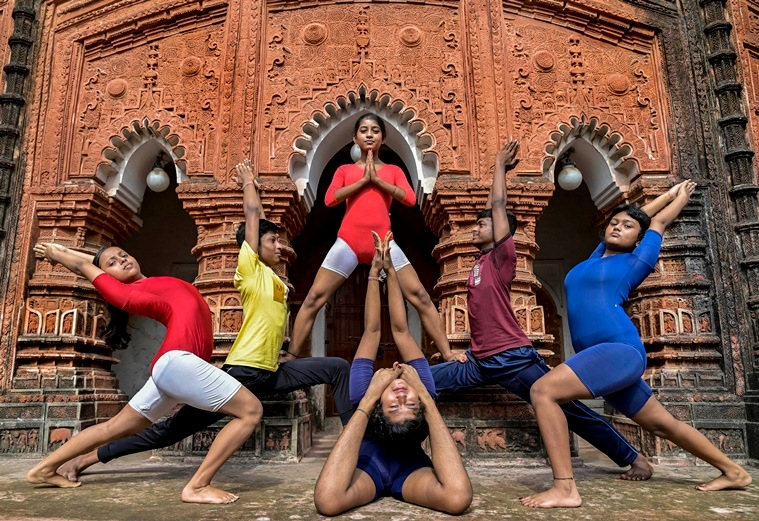 ITBP personnel ahead of International Day of Yoga, near Mount Abi Gamin in Uttarakhand. (PTI Photo)
ITBP personnel ahead of International Day of Yoga, near Mount Abi Gamin in Uttarakhand. (PTI Photo)The word yoga is derived from the Sanskrit root, “yuj”, which means to join. In the scriptures, yoga has been designated as the art and science of healthy living. Maharishi Patanjali codified the Yogasutras for the first time by organising various meditation practices. There are references to yoga in Vedic culture. Hiranyagarbha preached yoga at the beginning of creation. Sages like Patanjali and Jaimini made it accessible to everyone.
With its emphasis on a healthy body and mind, yoga has been accepted as an ideal way of life. I believe that yoga is not a therapy, it is the greatest means of self-development. In Indian culture, it has always received importance as a method of realisation.
At a time when the mind constantly wanders in the blind race of materiality, yoga is very useful for mental peace and contentment. At Prime Minister Narendra Modi’s instance, UNESCO has considered this great tradition of India as significant to the world and declared June 21 as World Yoga Day. This indicates the global acceptance of our traditions and culture.
Yoga shows the path to the ideal way of life, in which the mind embraces ideas of welfare, not just vis a vis the individual, but for the whole world. Our civilisation always underlined making connections, not breaking them. Yoga is the foundation of this. Maharishi Aurobindo has profoundly explained yoga. He wrote, “Yoga does not mean to give up life, but to face the problems and challenges of life with courage, keeping faith in the divine power.” According to Aurobindo, yoga is not merely the practice of difficult asanas and pranayama, but selfless surrender to god and transforming oneself into the divine form through mental education.
Best of Express Premium
Yoga is about the mind-body relationship. If the mind is healthy, the body becomes healthy too. If the current generation embraces the yogic routine and yoga is made mandatory in schools and colleges, many complexities related to life can be solved very easily.
 Children perform yoga as part of preparations ahead of International Day of Yoga, in West Bengal on Monday. (Photo: PTI)
Children perform yoga as part of preparations ahead of International Day of Yoga, in West Bengal on Monday. (Photo: PTI) We all know that the prana shakti controls all the activities and arrangements of the body. The accumulation of life force and its arrangement is possible only through yoga. Yoga is naturally related to pranayama. It awakens our inner energy and makes it healthy, balanced and active. By helping us control our instincts, yoga helps us lead a healthy life. Bhastrika, Kapal Bhati, Tribandha, Anulom Vilom, and Bhramari are easy yoga asanas that can be practised by everyone with little effort. Done regularly, they nurture not just the body but also the mind and give direction to a positive life.
The meaning of yoga is to know the powers within, to harness them and awaken one’s infinite powers by realising our inner self. Swami Vivekananda had advised yogis in his time to set a personal example. What he meant was that yoga should be kept away from materialism. It should be seen as a practice for the welfare of humanity. That is the greatest need of the hour.
Lord Shri Krishna has said in the Bhagavad Gita, “Yogah karmasu kaushalam” (Doing any work with skill is yoga). This message has a deep meaning and if we understand it, we will be able to sync our lifestyle with the precepts of yoga that Indian culture propagates. Knowing one’s mind and adapting accordingly is the true yoga. On Yoga Day, let us carry forward this great tradition and spread the message of “Sarve Bhavantu Sukhinah”.
The writer is the Governor of Rajasthan
- The Indian Express website has been rated GREEN for its credibility and trustworthiness by Newsguard, a global service that rates news sources for their journalistic standards.


